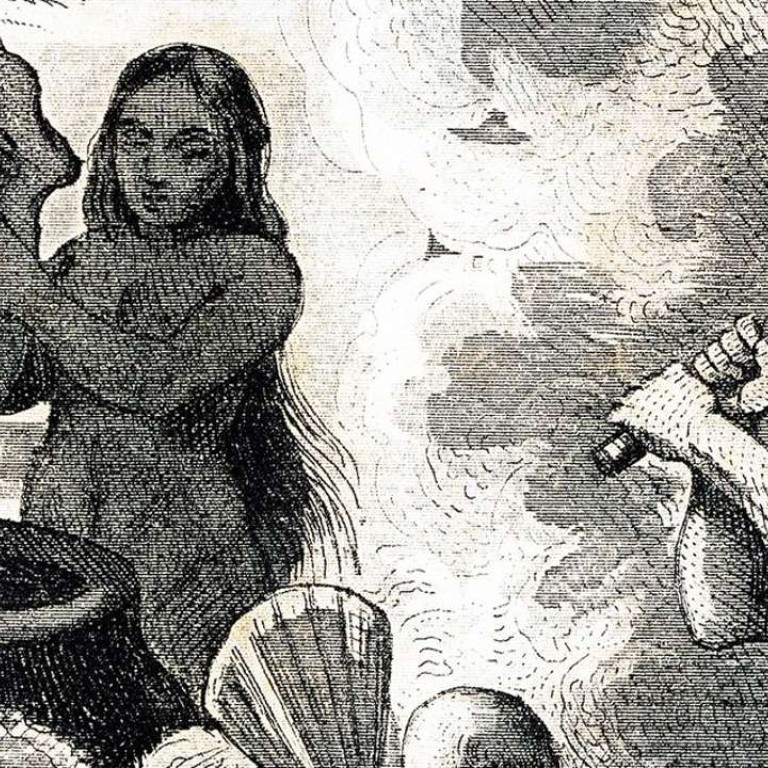
Book review: Eat Me – history of cannibalism reveals gory details you may not want to know
From the Bible to convicted German cannibal Armin Meiwes (who said it ‘tasted like pork’), author Bill Schutt tracks the human flesh trail – and also highlights the remorseless practices of the animal world

by Bill Schutt
Profile Books
3.5/5 stars
Cannibalism, suggests biologist Bill Schutt in his entertaining but slightly unorganised account, is an “enduring aspect of life” that leaves none of us “untouched”. At this point, the reader may be checking their neck for bite marks.
But Schutt clearly means that we are touched by cannibals in some kind of all-encompassing but non-literal sense. From the child-eating hag of Hansel and Gretel to Hannibal Lecter, Schutt argues that cannibals are central to human stories.
His final paragraph tries to make the case that cannibalism is highly underrated. Maybe it’s even the key to everything: “Far from being the nightmarish aberration we tell ourselves it is – in films, novels and tabloid sensationalism – cannibalism has woven itself into our myths and legends, formed the basis of miracle cures, ancient and modern, helped discipline naughty children (and entertain good ones), popped up in the Bible, fascinated anthropologists, zoologists and biologists and – sadly – played a significant role in colonialism, conquest and war.”

It’s surprising that Schutt felt he had to plead that his subject is worthy of our attention. We recoil from a book on cannibalism not because the subject does not interest us but because it bites us, right in the viscera. It’s hard to think of anyone ever reproaching cannibals for being boring. They have been accused of many other horrible things – eating other people being the main one – but then, they are guilty of those.
Take Armin Meiwes. This German man is serving a life sentence for eating computer technician Bernd Brandes, who answered a chat room request looking for someone who wanted to be consumed. With Brandes’ consent, Meiwes killed and dismembered him and sautéed him with “salt, pepper, garlic and nutmeg”. Meiwes said the flesh tasted a bit like pork.
Such psychopathic cannibals are not, however, the main focus of Schutt’s book, as he wisely remarks that he wanted to avoid giving “acclaim” to real-life Hannibals. Schutt is more interested in cannibalism as a cultural and biological phenomenon. In a series of fascinating chapters, he examines the circumstances under which different forms of cannibalism are adopted by either human or animal societies.
In anthropology, there are two basic kinds of cannibalism. Exocannibalism means eating someone from outside your social group, perhaps as a form of ritual tribute or warfare. The Caribs apparently consumed enemy prisoners “to transfer desired traits, like strength or courage, from the deceased enemy to themselves”.
Endocannibalism, by contrast, means eating someone from within your family or group, and it can be an act of love or respect. In the Amazonian Wari’ tribe , eating a small piece of a deceased relative mixed with bone meal and honey is believed to help with the grieving process.
A more extreme form of endocannibalism is the filial variety once practised in China. Key Ray Chong, author of Cannibalism in China, recounted that “children would cut off parts of their body and make them into soup to please family members, particularly their parents”. It most often occurred in medieval times between sons and fathers. Part of one’s own thigh or upper arm might be removed and thoughtfully cooked for an ailing parent in congee.
Eating human body parts, Schutt reminds us, has not always involved violence or slaughter. The most obvious example is the practice of new mothers eating the placenta after a baby is born as a way to replace nutrients lost during birth.

Human meat is a taste that few will ever share. For all our talk about cannibalism, there are very few human cultures where it actually happens, outside of extreme circumstances such as the Uruguayan flight disaster of 1972 , when 16 survivors on a remote, snowy mountain collectively – and reluctantly – decided to eat some of their dead comrades.
But non-survival cannibalism is extremely rare. Schutt argues that this is partly because there is a strong Western taboo against it. In Freudian terms, cannibalism is one of those unthinkable actions that we forbid in order to hide the fact that we have a deep and primitive urge to do it. But there are strong signs that most humans have an even stronger urge not to eat other people. It isn’t pleasant to think of ourselves as meat.
Many animals, on the other hand, have no such compunction. In nature, as Schutt writes, cannibalism comes with “no grey areas, no guilt and no deception”. The best and most vivid parts of the book describe some of the extraordinary forms of cannibalism that take place in non-human societies.
For animals, cannibalism can offer evolutionary advantages to deal with problems that Schutt summarises as “too many kids, not enough space, too many males, not enough food”. Firstborn eagles may consume rival siblings and even hamsters may be driven to eat their young in conditions of stress, but perhaps the goriest of all cannibals are to be found in various spider families.
The female redback spider munches on the abdomen of her male partner as they copulate, before wrapping him in silk as a nourishing meal to enjoy later. Male redbacks, Schutt notes, weirdly benefit from being eaten because it gives them the chance to pass on their genes. For redback spiders, cannibalism really is the key to everything.

